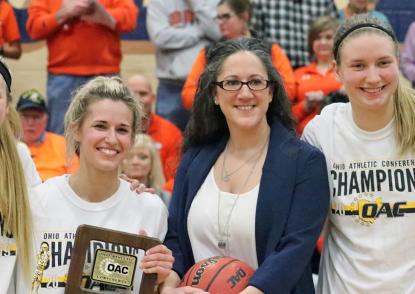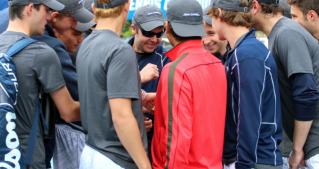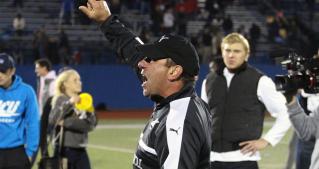
This story originally appeared in Onward: John Carroll Alumni Magazine, which was mailed in early November. Check your mailbox over the next few weeks to get your copy.
Read the full version of Onward.
In 2013, the JCU women’s basketball program lost five of their last six games, bowing out in the conference playoffs. Weeks later, they were looking for their next leader. To give the program a fresh start, John Carroll turned to a former South Carolina point guard with experience as a Division I assistant coach.
“I really saw opportunity,” Kelly Morrone says. “After being on teams where we were the new staff, I understand that the transition for those kids can be really difficult. My main focus was on taking the right approach, forming relationships with them, keeping it simple. I was just excited to see what this could be.”
The Blue Streaks had won just 23 games since reaching the OAC tournament final in 2011. Morrone’s first squad won their first 11. Under her tutelage, the team ripped off 22 victories, not losing until the calendar flipped to 2014.

